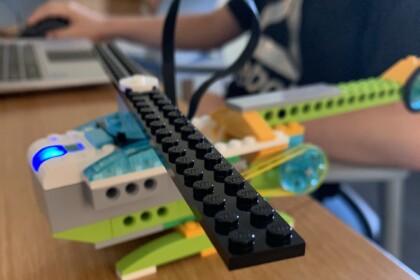
Chatham Marconi Maritime Center -STEM Programs

In Chatham: STEM Inspired by Marconi

Chatham Marconi Maritime Center has intriguing museum exhibits and technology-based educational programs that make substantial contributions to Cape Cod’s children. Every summer Chatham Marconi has STEM camps for children in grades K thru 9.
Want to build robots?
Learn animation?
Do Minecraft challenges?
You can do all of this and more during Summer STEM Camps.
The Chatham Marconi TechSmart program brings lessons and hands-on experiments into 4th grade classrooms across the Cape. Sound waves, radio/light waves and communication
systems, including Morse code, are presented in a manner that reach all learning styles and all learning levels. These lessons and experiments are produced by Chatham Marconi STEM
educator, Dr. Vicki Hill and Chatham Marconi engineers and physicists.
Chatham Marconi has a hands-on TechSmart engineering museum for field trips for 4th grade students whose schools are part of the TechSmart program. Special TechSmart engineering museum hosts open houses during vacation weeks.
The TechSmart on the Road program hosts events at local libraries featuring hands-on activities on sound waves, radio/light waves and Morse code.
Chatham Marconi also offers STEM after-school events and family night.
The Chatham Marconi maritime center has a long history on Cape Cod. The campus was built in 1914 for the Marconi Wireless Telegraph Company of America but was never put in operation because of WW1. The station was purchased in 1919 by RCA and began ship-to-shore operations in 1921. During WW2, the US Navy took control of the station to intercept communiques from German u-boats to German High Command. The Chatham Marconi maritime center is now home to the Marconi-RCA Wireless Museum and Education Center. For more information, see our website: www.chathammarconi.org . Or, better yet, enroll your child in our summer stem camp and visit our museum.